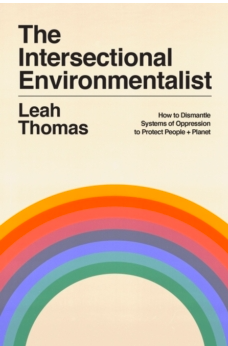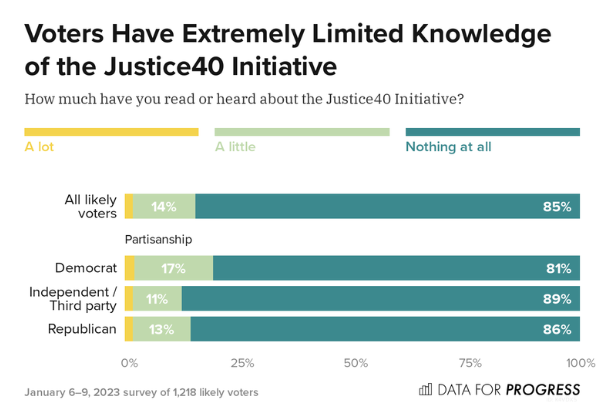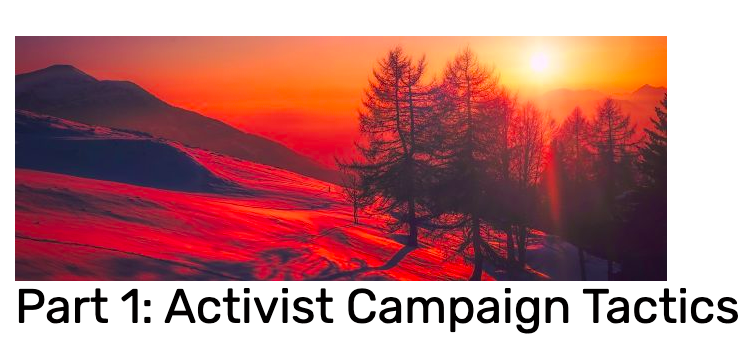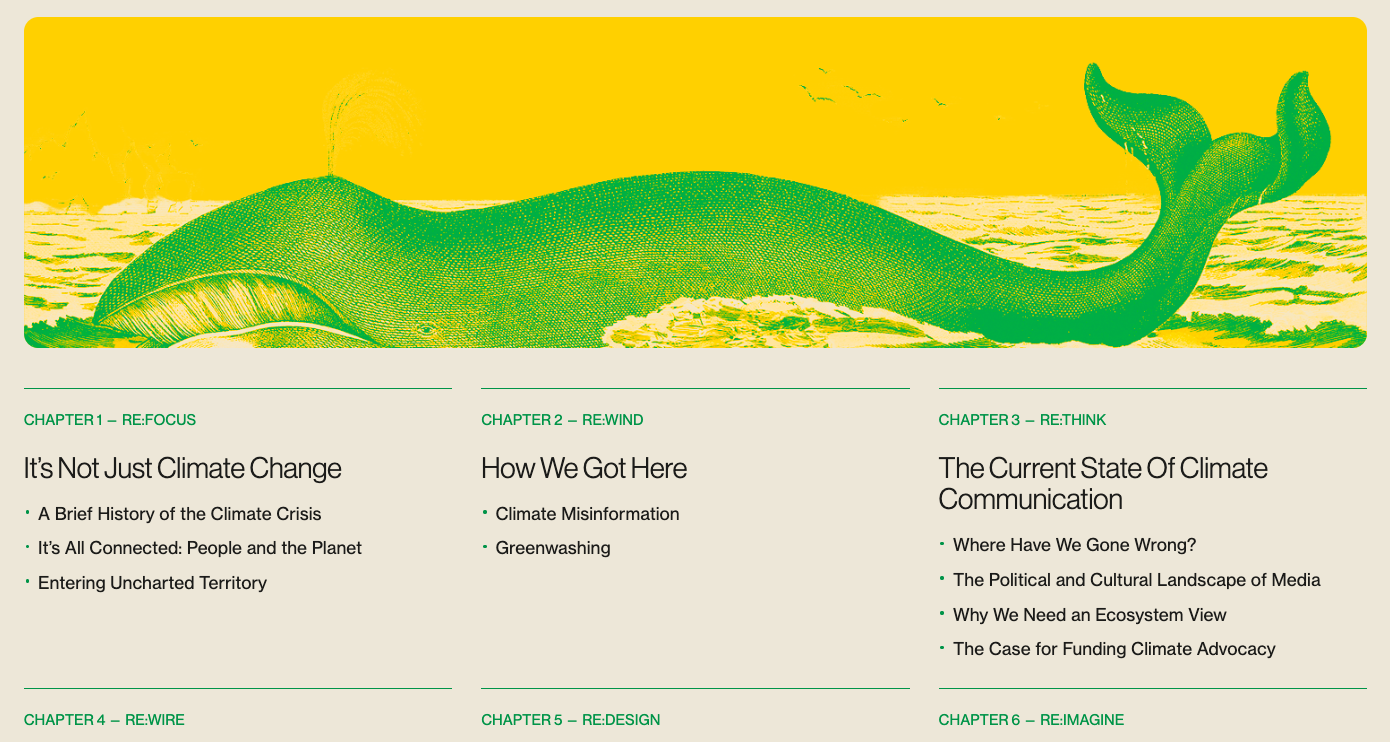Resources
Search below for resources covering the intersection of climate engagement, social science and data analytics.
RESULTS
Using Radical Re-Imagination to Create a Vision for Our Future
Stories like Wakanda Forever demonstrate the level of violence that colonization, conquest, and genocide have caused throughout generations—and how we can overcome them. When we think about the future of technology and social innovation, we need to do so through an alternative lens, just like in Wakanda Forever, and believe in a future where everyone has the talent, vision, and access to build projects that are sustainable and beneficial to all. We need to visualize a world rooted in abundance that rejects the idea that Blackness and Indigeneity must continue to be considered nonexistent in the Americas. Creating a new vision is just the start. We also must ask ourselves what this fictional speculation about our futures means for us today, especially those of us in positions to influence philanthropic resources for communities of color. It is our responsibility to be proactive about centering those intersecting narratives and debunk the myth that innovation and creativity come only from those who can access or understand the latest technology or benefit from proximity to centers of innovation and power.
#BlackClimateWeek Reading List 2023
Black authors have told stories of the origins and consequences of environmental injustices, given us the richest and most comprehensive collection of poems about nature, and reimagined the future. The Solutions Project is excited to share recommendations to add to your reading list in February and all of the other months of the year. Readings include “The Intersectional Environmentalist” by Leah Thomas, “Black Joy: Stories of Resistance, Resilience, and Restoration” by Tracey Micha’el Lewis-Giggetts, “Becoming Abolitionists” by Derecka Purnell, “An Abolitionist’s Handbook” by Patrisse Cullors, and “Madam C.J. Walker’s Gospel of Giving” by Tyrone McKinley Freeman.
Harnessing the enormous untapped power of celebrity to help social movements
Building on the long legacy of activist entertainers, here are five ways movements for justice and famous supporters can partner to promote change. First, celebrities and movements can make better political endorsements together: they can look to social justice organizations for guidance as to which candidates have listened to them and committed to processes to govern in the best interest of their communities. Second, celebrities can amplify trigger events, which can draw people with no prior interest or experience in politics into mass protests. Third, celebrities can boost organizing campaigns, especially at pivotal campaign junctures. Fourth, celebrities can expand the Overton window by lending their support to causes and movements that exist outside of current norms, and thereby work to expand the bounds of public acceptance. Fifth, they can fuel boycotts by putting extra pressure on corporations.
What determines the success of movements today?
New research from the Social Change Lab offers key insights into the three main factors that lead to protest wins. First, nonviolent tactics are more likely to lead to successful outcomes relative to violent outcomes—experts consulted were reasonably confident that violence is a less effective approach and the literature supported their view. Second, size of protests is really key, with better-attended protests meaning a higher chance of policy changes and other desired outcomes. Third, favorable sociopolitical context like pre-existing public opinion, the response of the media, whether there are elites (like politicians or celebrities) who support the cause, as well as blind luck are helpful for facilitating successful political outcomes.
Poll: Voters Support Environmental Justice Two Years After Justice40
Voters widely agree that “environmental justice” is important when the concept is explained to them. Voters also generally support the Justice40 initiative, despite disagreements on how to implement it. 77% of voters say that it’s important for lawmakers to consider environmental justice in creating environmental laws after reading a brief definition of the term “environmental justice,” including 42% who say it’s “very” important for lawmakers to consider environmental justice. Voters support the Justice40 initiative by a 54%-33% margin after reading a brief description of it.
Twelve months of climate communications data
Here are 12 of Potential Energy’s favorite climate insights from 2022 data. First, human stories beat abstract concepts, every time. Second, science — and scientists — still matter a lot. Third, conservatives moved their climate beliefs… but education is critical. Fourth, what politicians love to say . . . had some real believability issues. Fifth, social, collectivist actions were much easier to create than individual behavior changes. Sixth, climate salience went down, but extreme weather was key. Seventh, the left and the right actually agreed on something: nuclear energy. Eighth, actually, the left and the right also happened to agree on one more thing: energy independence! Ninth, and one last thing we all happen to agree on: fairness and accountability. Tenth, the IRA was a massive climate win, but there’s a long road ahead. Eleventh, sadly, we found that stopping clean energy projects will be much easier than supporting them. Twelfth, lastly, we learned a lot about testing … and are even less enamored with the usual polls.
There are certain common strategies and approaches that underpin successful public engagement, despite differences in location and culture. Organizations, community groups and governments can draw inspiration from these strategies and successfully apply them to other contexts in which effective public engagement can be carried out to achieve long-lasting and impactful change. From these success stories, there are certain commonalities that can be found throughout the strategies and processes deployed by each initiative. These include: a bottom-up approach where a two-way process of public engagement and participation has been instrumental in achieving a truly inclusive outcome; participation of a wider community beyond traditional classrooms or institutional education settings; co-creation and co-design of solutions and policies that put participants and the community at the centre of projects and consultations.
To be successful, progressive movements should organize in friendly political climates, mobilize frequently, and choose nonviolent tactics. For the best messaging strategies, use clear, specific language, apply “diagnostic” (i.e., diagnosing the problem) and “prognostic” (i.e., prescribing solutions) language frames, use master frames with wide appeal, consider your audience, and secure media coverage. For effective educational programs, use interactive, ongoing formats and reproduce effective programs. For effective protest strategies, mobilize regularly, combine protests with other tactics, and focus your message. To build strong progressive movements, recruit activists and volunteers by considering individual factors and constraints, ask people to join, demonstrate effective activism, use powerful communication strategies, and support community organizations. To prevent burnout, consider different levels of involvement and foster supportive environments. This guide also includes strategic pieces of advice for organizing and movement building.
A New Era in Climate Communications
A new era in climate communications is a digital knowledge hub, a place to learn, inspire and support, a place to explore and to break down the communication barriers standing in the way of solving the climate crisis. Chapters of the whitepaper include: “It’s Not Just Climate Change,” “How We Got Here,” “The Current State of Climate Communication,” “Our Brain and Climate Change,” “Crafting New Climate Change Narratives,” “Transforming Climate Communications,” “Supercharging Climate Action Through Creativity,” “The Rise of Active Citizens,” “A New Era in Climate Communications,” and “Looking Ahead.” Organizations around the world have recommended a unified “north star” for climate communications to monitor and assess efforts, showcase best practices, and encourage collaboration for effective engagement.
Today’s young people experience the impact of climate change on their communities every day, both at their doorsteps and in the media they consume. Global headlines have increasingly used the term “eco-anxiety” to describe a generalized fear of environmental doom. Yet few are telling the story of the optimism and action that define how young people want to deal with it. This survey found that more than half of these youth across the globe (57%) experience eco-anxiety. However, they aren’t letting their anxiety spiral into despair, or worse, apathy. Instead, threats of climate change drive their resilience, optimism and activism. Though this resilient mindset is positive, a gap remains between young people in this survey who identify as eco-optimists and eco-realists (a combined 66%) and those taking direct action in their own communities (just 16%). For those working to counter and mitigate the effects of climate change, it is clear we need to do more to foster agency among young people and create direct opportunities for young people to participate in and drive climate solutions. This research surveyed youth in many countries around the world.
Pagination
- Previous page
- Page 4
- Next page









